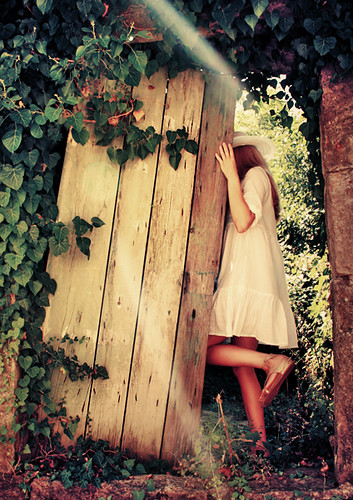Secret Garden
The Secret Garden is a story of transformation. A British brat loses her absentee and negligent parents to cholera in colonial India, only to be transplanted to her uncle’s mysterious mansion in the Moors. The uncle is even more oblivious to her existence then her parents ever been, and the neglected, lonely and anti-social orphan wonders about until she discovers the legendary secret garden her uncle planted for his young beautiful wife before she passed away prematurely and left him bitter, aloof and resentful.
Through to this abandoned garden, the little orphan girl discovers beauty that heals her both physically and spiritually. She regains her ability to enjoy life, and her joie de vivre is so infectious that it brings light to the darkest corners of the castle, including her uncle’s battered heart.
Frances Hodgson Burnett wrote the novel in 1911, and a hundred years later, Mandy Aftel created a perfume in its honour. The magic bean when the little mini arrived in a dark silk pouch with ornate tapestry, reminiscent of climbing roses. Uncorking the tiny lid, a strange yet familiar smell rose to my nostrils, bringing forth the charm and intrigue of antique furnishing and colonial fabrics. It was not at all what I was expecting (an outdoorsy, floral yet earthy perfume) but rather – an intense, dusky and quirky Oriental - mysterious and surprisingly also quite old-fashioned.
From the first moment till the last, Secret Garden smells to me more of an indoors perfume. The scent that a person locked up in a secret room may be dreaming of if they’ve never smelled fresh air of a garden before. It’s the perfume they would sprinkle over red-painted thistle to imitate a living rose, only to wake up to the sound of a rusty key in the door that will announce the next hot meal. The perfume would be a condolence for their soul, wrapped in sleek silk and brocade cloths, yet trapped in a wheelchair and worse of all - social restrictions and prejudice.
Secret Garden parfum opens with spicy-warm and nutty notes of cloves and patchouli (although, the Aftelier website states that the spices are only “phantoms” – illusions that arise from the mingling of the other notes) and a robust, rounded berry and fruity notes of raspberry jam, blood orange juice and antique roses. The spicy aspect of roses is intensified with the presence of patchouli and greenish geraniol (an intensely rosy-smelling isolate – present in both rose and geranium). Dark castoreum further intensifies the spicy impression, but with such depth and quirkiness redolent of old crackled leather armchairs that you’d find in a dark study of an old English house.
Indole – from both jasmine and civet – is another important component in this perfume, adding to the jam-like qualities of the raspberry and blending seamlessly with the other elements, which include elusive blue lotus (which has a sheer, watery quality that is out of this world). The indole is played very quietly though, more of a thread through the perfume rather than a definite presence. The perfume fades quietly and slowly, in an elongated diminuendo distributed evenly between its components, though the last to depart is in fact the raspberry, and sweet-powdery vanilla absolute.
Top: Bergamot, Bois de Rose, Geraniol, Blood Orange.
Heart: Jasmine Sambac, Raspberry, Turkish rose, Blue Lotus.
Base: Civet, Castoreum, Vanilla, Deertongue, Benzoin, Aged Patchouli.


